#oxford university press
Text


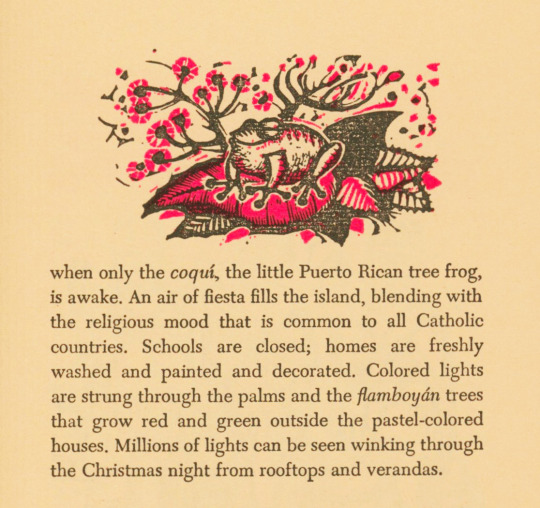
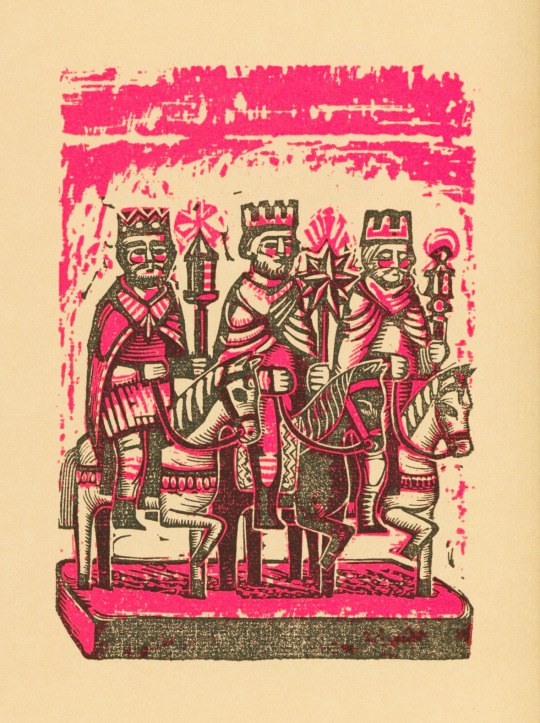






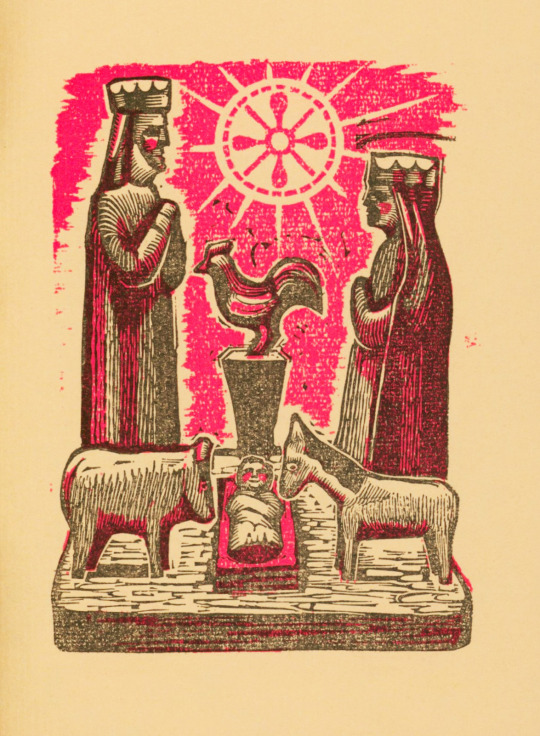
Merry Christmas!
Or as they say in Spanish, Feliz Navidad! Today we celebrate the Christmas holiday with a festive book, Land of Two Christmases, which was published by Oxford University Press in 1965 with 360 copies held for distribution to the Typophiles. The text was written by Harriett Philmus Pitt and discusses the various Christmas traditions celebrated in Puerto Rico, where the books says it is celebrated in both the American and Spanish styles—though I would argue that Puerto Rico has a style all it's own! You can learn all about Christmas and related celebrations in Puerto Rico on the Discover Puerto Rico website.
The illustrations are by Erwin Schachner and were printed using photo-engravings of original linoleum prints. The text was set in Caledonia and letterpress printed on tan laid paper by Marbridge Printing Company, Inc. The book is printed in black and bright pink, making it quite festive though not what most would normally consider to be Christmas colors.
Merry Christmas to all and to all a good night!
View Christmas posts past.
-- Alice, Special Collections Department Manager
#Christmas#Land of Two Christmases#Oxford University Press#Typophiles#Harriett Philmus Pitt#Puerto Rico#Erwin Schachner#linocuts#Marbridge Printing Company#holidays
54 notes
·
View notes
Text

Audre Lorde, Apartheid U.S.A., in I Am Your Sister. Collected and Unpublished Writings of Audre Lorde, Edited by Rudolph P. Byrd, Johnnetta Betsch Cole, and Beverly Guy-Sheftall, Oxford University Press, Oxford, 2009, pp. 64-72 [American Studies, Yale University, New Haven, CT]


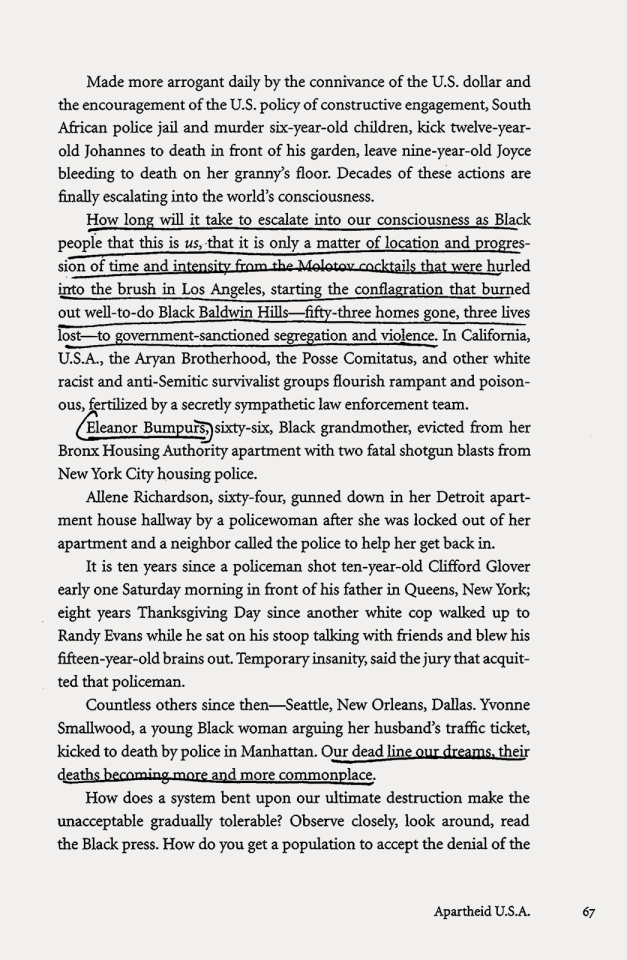
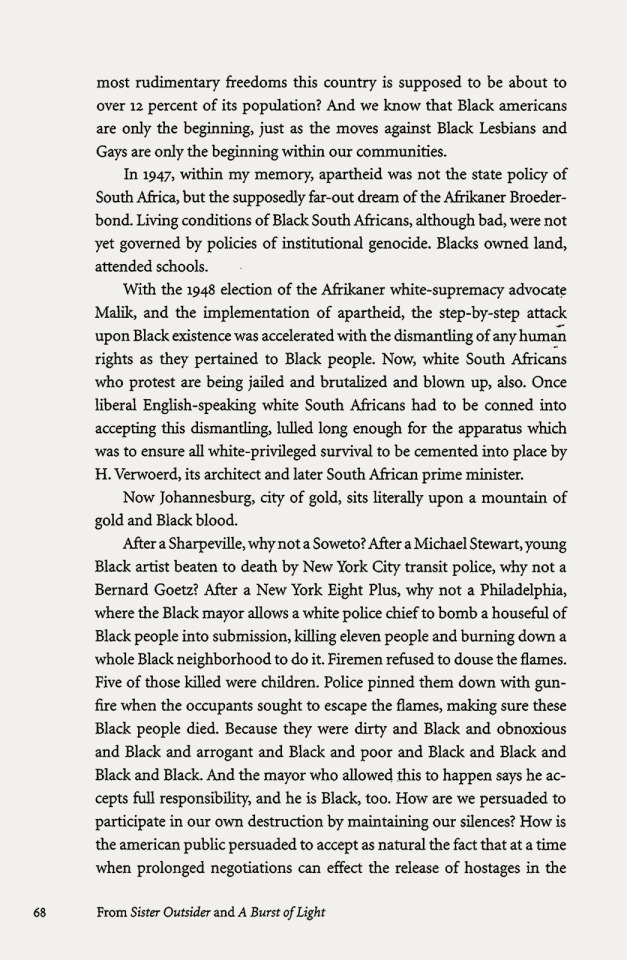

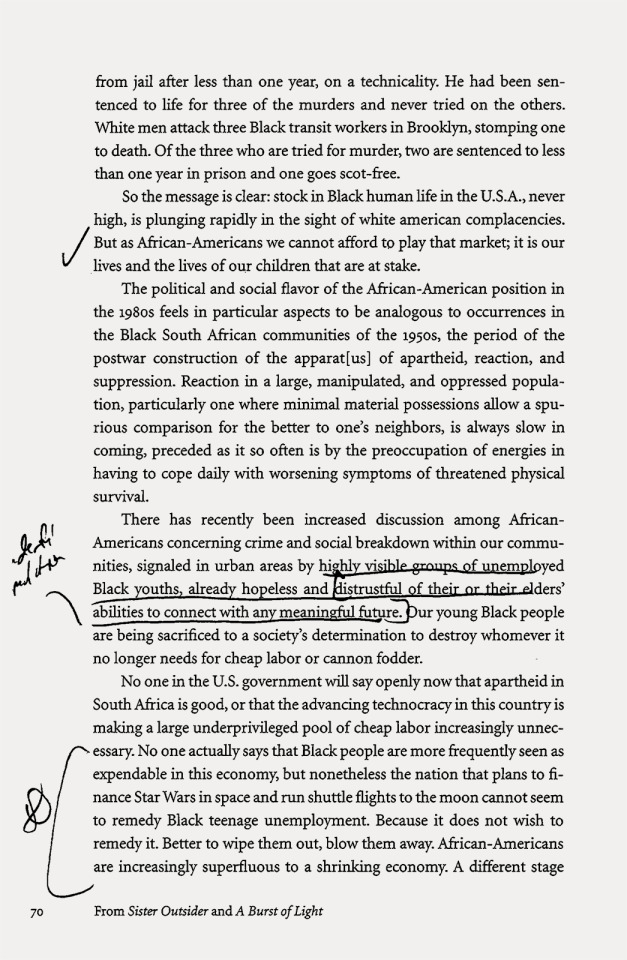


Plus: Audre Lorde, Apartheid U.S.A. / Merle Woo, Our Common Enemy, Our Common Cause, Freedom Orgainizing in the Eighties, «Freedom Organizing» 2, Kitchen Table: Women of Color Press, New York, NY, 1986
#graphic design#book#audre lorde#rudolph p. byrd#johnnetta betsch cole#beverly guy sheftall#oxford university press#1980s#1990s
34 notes
·
View notes
Text
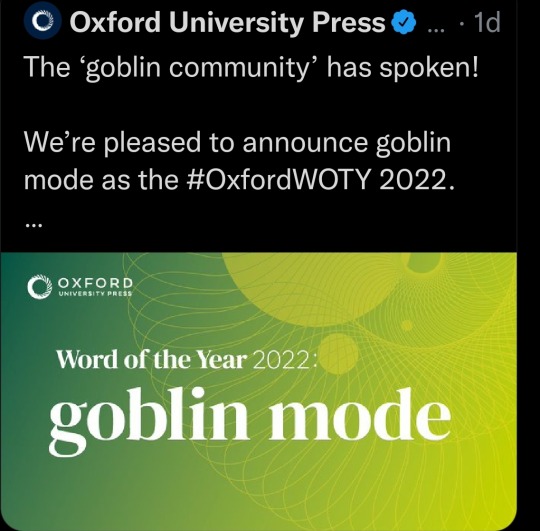
175 notes
·
View notes
Photo

Cut off from his religious, metaphysical and transcendental roots, man is lost; all his actions become senseless, absurd, useless.
- Eugene Ionesco
Oxford University Press (OUP) is the university press of the University of Oxford. It is the largest university press in the world, and its printing history dates back to the 1480s. Having been officially granted the legal right to print books by decree in 1586, it is the second oldest university press after Cambridge University Press.
Last year the University Press announced it would be changing its branding and logo which had served it so well and was iconic the world over. The new branding was designed by an agency named Superunion with refinements by typographer and logo designer Rob Clarke.
The new logo featured Oxford’s name and an icon showing the turning pages of a book forming the ‘O’ of the popular university press. It represented Oxford’s heritage as a print publisher, and its transformation to a future of multi-format content publishing. Or so they say.
The old OUP logo had the university coat of arms in which was the Latin quote: Dominus illuminatio mea. This is Latin for 'The Lord is my light’. It is the incipit (or opening words) of Psalm 27 from which the motto of the university was taken.
That motto has been in use there since at least the second half of the sixteenth century, and it appears in the coat of arms of the university. The origins of the motto shdes light (no pun intended) on the origins of the mission of the university as it was back then. Roman Catholic priest and theologian Ivan Illich explained that ancient university motto was being formulated around a time when scientists were progressively replacing the concept of vision as a gaze radiating from the pupil by the concept of vision as the retinal perception of an image formed by reflected sunlight. Illich wrote, “To interpret De oculo morali, the relationship of things to God "who is light" must be understood. This is the century (i.e. the thirteenth century) suffused by the idea that the world rests in God's hands, that it is contingent on Him. This means that at every instant everything derives its existence from his continued creative act. Things radiate by virtue of their constant dependence on this creative act. They are alight by the God-derived luminescence of their truth.”
It seems the Oxford University Press, in all its wisdom, threw out hundreds of years of tradition in the name of digital transformation to advance knowledge to all fours corners of the globe. In other words just another bland soulless corporate entity. As one critic said Oxford had gone from ‘maybe god will read your book, but no one else’ to ‘look here’s a visual representation of the drain your book will disappear down’.
#eugene ionesco#ionesco#quote#roots#oxford university press#oup#oxford#university#brand#branding#secular#sacred#heritage#custom#books#publishing#education
78 notes
·
View notes
Text
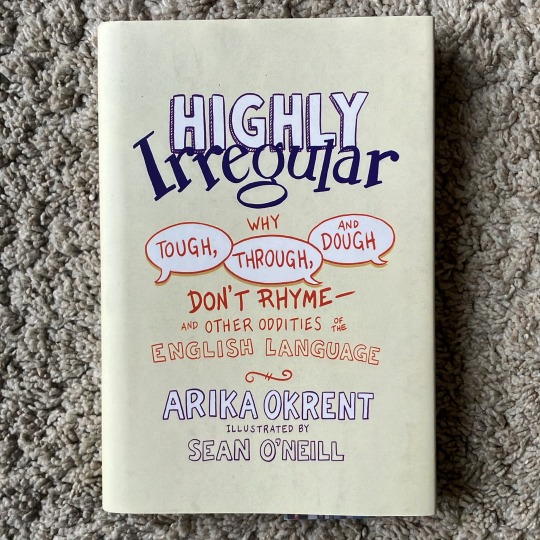
Arika Okrent: Highly Irregular: Why Tough, Through, and Dough Don't Rhyme and Other Oddities of the English Language (2021)
#akira okrent#sean oneill#highly irregular#english#language history#grammar#linguistics#oxford university press
6 notes
·
View notes
Text

Got rizz? Tom Holland memes propel popularity of 2023 word of the year
Gen Z slang for charm or attractiveness sees off ‘Swiftie’, ‘situationship’ and ‘prompt’ in judges’ decision
Do women twirl their hair when they’re around you? Do men laugh loudly at your jokes? Have you noticed you’re particularly good at chatting people up? Then you’ve got rizz.
If you’re unfamiliar with the word then get to know it, because “rizz” has been named as the word of the year by Oxford University Press (OUP), the world’s second oldest academic press and the publisher of the Oxford English Dictionary.
The gen Z slang for “style, charm or attractiveness” or “the ability to attract a romantic or sexual partner” beat out other contenders such as “Swiftie” (an enthusiastic fan of Taylor Swift), “situationship” (an informal romantic or sexual relationship) and “prompt” (an instruction given to an artificial intelligence program).
Rizz is believed to come from the word “charisma”, and can be used as a verb, as in to “rizz up”, which means to attract, seduce, or chat someone up, OUP said.
The word was first recorded in 2022 and went viral in June this year after the Spider-Man actor Tom Holland declared in an interview: “I have no rizz whatsoever. I have limited rizz.” He later explained he won over his girlfriend, the actor Zendaya, by playing the “long game”.
As Holland’s comments spawned endless memes, overall usage of the word surged by a factor of about 15, according the publisher. Today, the word is used massively online, with billions of views of the hashtag “rizz” on TikTok.
OUP said the word had “boomed on social media”, showing how the internet can propel initially fringe language into the mainstream. “This is a story as old as language itself, but stories of linguistic evolution and expansion that used to take years can now take weeks or months,” it said.
It said the growth of rizz “speaks to how younger generations create spaces – online or in person – where they own and define the language they use. From activism to dating and wider culture, as gen Z comes to have more impact on society, differences in perspectives and lifestyle play out in language, too.”
This year’s shortlist of eight words was selected by language experts at OUP. That list was then put to a public vote in late November, reducing the field to four finalists, before Oxford lexicographers made the final decision.
More than 30,000 word lovers helped to decide head-to-head competitions between pairs of words or phrases. They selected “rizz” over “beige flag” (a character trait indicating that a partner or potential partner is boring).
The other words that didn’t make the final cut were “parasocial” (a relationship characterised by the one-sided, unreciprocated intimacy felt by a fan or follower for a well-known figure), “heat dome” (a persistent high-pressure weather system over a particular geographical area), and “de-influencing” (the practice of discouraging people from buying particular products or reducing their consumption more generally).
Last year the public was given the opportunity to choose the overall winner, and an overwhelming 93% voted for “goblin mode” – a slang term describing “unapologetically self-indulgent, lazy, slovenly or greedy” behaviour.
Casper Grathwohl, the president of Oxford Languages, said witnessing thousands of people debate and discuss language “really highlights the power it has in helping us to understand who we are, and process what’s happening in the world around us”.
Given that “goblin mode” resonated with so many after the pandemic, Grathwohl added, “it’s interesting to see a contrasting word like ‘rizz’ come to the forefront, perhaps speaking to the prevailing mood of 2023, where more of us are opening ourselves up after a challenging few years and finding confidence in who we are.”
Previous words of the year – chosen by Oxford lexicographers – include “vax” (2021), “climate emergency” (2019) and “selfie” (2013).
Do you know these gen Z slang terms?
POV Short for “point of view”, referring to one’s point of view of a certain situation, including a physical standpoint, an opinion or attitude.
Lore Referring to background information about a person, typically secret or random pieces of information.
Tea Meaning gossip or inside information, used in phrases like “spill the tea”, ie share the juicy information you have.
Hits different When something feels special, or appeals to you in a unique way, it “hits different”.
Sneaky link A secret meeting between two people romantically interested in each other, commonly used to refer to a hookup but also to describe a friends-with-benefits relationship.
Heather Refers to a very desirable person who everyone likes, derived from the Conan Gray song Heather, about being in love with someone who is in love with a girl called Heather.
Pick Me Girl A woman who claims or acts as if she is unlike most other women to gain attention from men.
Slept on To be ignored, overlooked or not appropriately respected.
Girl dinner A low-maintenance way to eat, by picking (usually insubstantial) items from the fridge and arranging them in an aesthetically pleasing way on a plate.
Canon event A trend that started after the release of Spider-Man: Across The Spider-Verse, referring to a pivotal moment that changes the course of one’s life and therefore cannot be interrupted.
#Tom Holland#Rizz#Oxford University Press#rizz has been named as the word of the year#the guardian#zendaya#tomdaya
13 notes
·
View notes
Text
You Nakai — Reminded by the Instruments: David Tudor's Music (Oxford University Press)
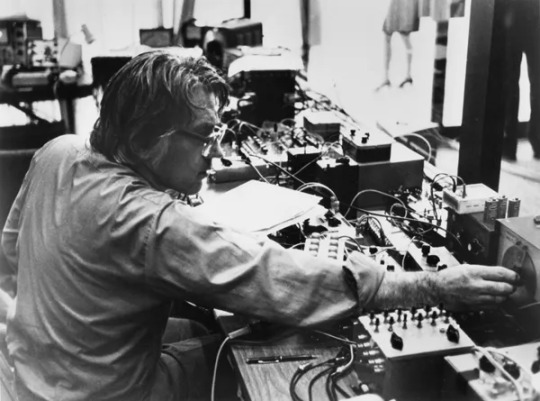
You Nakai's Reminded by the Instruments: David Tudor's Music is a mammoth and vividly detailed analysis of the late David Tudor's trajectory from boy prodigy on the church organ to one of the first purveyors of live electronic music, with stops along the way as go-to pianist interpreting scores from most of the major composers of experimental music through the 1950s. Clocking in at 768 pages with over 300 images of Tudor's performances, instruments, schematics and block flow diagrams, the book goes into intense detail and will not be an easy read for those looking for a mere chronology of Tudor's work. Nor will the book please those in search of anecdotes about Tudor's personal life. As the title implies, this book is mainly about the instruments Tudor developed and used in his live-electronic work from the early 1960s until his death in 1996.
The very notion of what Tudor considered an instrument takes Nakai's research down a long, and at times, circuitous path through numerous interviews with former friends and colleagues, such as Gordon Mumma and Pauline Oliveros, to mining the archives of the David Tudor Papers at the Getty Research Institute in Los Angeles, the David Tudor Collection at Wesleyan University in Middletown Connecticut (with over 500 instruments; 150 of which were built by Tudor himself) and the Merce Cunningham Dance Foundation Records at the New York Public Library. This trove of material included receipts, crumpled notes, random scribbles on the backs of envelopes, empty packages of electronic components, clippings from hobby electronics magazines, letters from strangers, train and bus tickets, circuit plans, photos, tapes of interviews, video recordings and bills of material for various electronic projects.
If this at all sounds overwhelming, you'd be more than right in thinking so. And it seems this was also the case for Nakai, who at the beginning of his work on the book, which went from 2007-2019, knew next to nothing about analog electronics. The actual idea of writing about Tudor's work stemmed from a random peek into the archives at the Getty Research Institute when Nakai was doing research there for another project. This led to Nakai spending the next 12 years of his life studying and writing about Tudor's work, which for Nakai most resembled a black box that, in order to be fully understood, demanded to be dismantled and looked at from the inside. To achieve this, Nakai employed a method of research he termed reverse-musicology, in which he tried to approach Tudor's materials as Tudor would have approached them himself. But what did this mean exactly?
Part of the answer lies in Nakai's chosen title for the book, taken from a fragment of the Walt Whitman poem A Song for Occupations, which Tudor had scribbled in one of his notebooks around 1955: All music is what awakens from you when you are reminded by the instruments. For Tudor, being reminded by the instruments meant, in his words, Observing electronic components and circuitry as individual and unique, rather than as servomechanisms, revealing their personalities, directly related to the particular musician involved with them. The deeper this process of observation, the more the components seem to require and suggest their own musical ideas, arriving at that point of discovery, always incredible, where music is revealed from the 'inside,' rather than 'outside.'
This quote is one of the few directly written by Tudor in Nakai's book. Tudor was not known for talking much about his work, if at all. He was often viewed as something of an enigma or living puzzle by his friends and colleagues. One of Nakai's main premises for working on this book was to approach Tudor's materials as Tudor did himself. Which in Tudor's case would be how he went about trying to solve the particular puzzle involved with interpreting a musical object, composition or performance. As John Cage once said about his friend, favorite musician and interpreter of his work, Tudor's interest in puzzles invited the whole thing of indeterminacy. To these ends, Nakai devised a two-fold method of approaching the massive puzzle that was Tudor's work: 1) Observe the given material thoroughly in an unbiased way until it reveals its own nature. 2) Bias the subsequent approach to the material based on this nature.
Nakai went to herculean lengths to understand the nature of Tudor's instruments. At the Wesleyan University collection he opened up the 500 instruments stored there and copied down their circuit plans, without at first even understanding what he was looking at. He took photos of nearly every single bit of material at the Getty Research Archives and transcribed all the recordings of Tudor's interviews to be found in the New York Public Library. Through this research Nakai hoped the nature of Tudor's instruments and their place in his work as a composer and performer would reveal themselves.
Tudor himself would have to be counted as the main instrument in Nakai's study. In 1959 the Italian composer Sylavno Bussotti sent Tudor a new collection of pieces entitled Five Piano Pieces for David Tudor. As Bussotti explained in a letter to Tudor, the pieces were not meant as an homage to Tudor but that they were written for Tudor the instrument, as one might compose a piece for orchestra or string quartet. Even before Bussotti's piece, many composers, including John Cage, Morton Feldman and Earle Brown, had written their pieces explicitly with Tudor in mind. They were composing in the context of how David Tudor would solve the puzzle of interpreting their pieces, many of which were graphical scores that gave an enormous amount of leeway in how they could be realized.
Tudor also viewed himself as an instrument, though this notion took root many years before composers began considering him as one. Tudor's lifelong interest in the work of the Austrian occultist Rudolph Steiner, who once wrote, Each human being was composed as a musical instrument, helped Tudor see the connection between the physical nature of the material he was working with and a metaphysical concern of his own nature. This side of Tudor's work, like many aspects of his life, was little known during his lifetime. Profoundly influenced by Steiner's book, The Inner Nature of Music and the Experience of Tone: The Occult Basics of Music, Tudor even went so far as to become a member of the Anthroposophical Society in 1957. It was this occult approach to understanding the nature of musical objects, as well as himself, which guided Tudor through much of his work.
Nakai faced many challenges in writing about Tudor's work, and not just because Tudor himself spoke or wrote very little about what he was doing. Beyond the hurdle of Tudor's reticence was a problem of concept that Tudor brought to the notions of composer vs. performer, score vs. instrument and composition vs. improvisation. Tudor dismantled, expanded and sometimes just downright ignored these categories. There was also the issue of, as Nakai terms it, Tudor's low threshold of boredom, moving in the course of his life from organ to piano to bandoneon and then electronics. Even when Tudor finally arrived at his phase of working solely with electronics, this was often coupled with visual elements, such as his decades-long work with the Merce Cunningham Dance Company or many projects in collaboration with visual artists.
"Reminded by the Instruments" leaves the door open to many other sides of Tudor's life, which Nakai freely admits to omitting in his opus. This would include, for example, Tudor's contact with Borbetomagus and what he thought about the nascent noise music scene in the United States — something Tudor referred to as pop groups! Nakai also avoided spending much time on areas covered in other books about Tudor, such as writing about Rainforest (probably Tudor's most famous piece), his piano realizations in the 1950's or participation at the Darmstadt seminars and Black Mountain College events with John Cage. The main focus here is the instruments and the transitions during Tudor's life. In particular, how Tudor went from being a performer of other people's music to being a composer of his own.
And this is often what is referred to as the great mystery surrounding Tudor's career: why did he stop performing on piano? Was it, as he (half?)-jokingly recounted to Alvin Lucier, Alcohol goes very well with electronic music; it's not so good with piano playing! Or, as he recounted in a joint interview with John Cage in 1972 on KPFA radio, I got tired of the sound of it. And I had a great desire to not have to hear it anymore! As much surrounding Tudor's life, this will probably remain a mystery. Just as his transition from interpreter of other people's work to being a composer in his own right. When did this happen, how? Part of the difficulty in answering such questions lies in the fact that Tudor redefined what composition meant. Or what performance meant. Or even what an instrument was. Virtually every aspect of Tudor's work went against traditional concepts. Which isn't to say that Tudor was at all interested in what all these concepts meant, traditionally or experimentally. Rather, the very nature of the material Tudor worked with caused these concepts to acquire new meaning.
Aside from the incredibly detailed look at Tudor's instruments and his approach to electronic music performance, the book offers an ancillary view of experimental music from the 1950's to the time of Tudor's death in 1996, touching on indeterminacy, prepared piano techniques, graphical scores, the introduction of live-electronics (as opposed to tape playback of pieces composed in a studio) and sound installation. So many of the ideas discussed in this book that Tudor began working with very early on are in such common usage today that we might as well imagine they'd always been with us. This would include no-input systems, field recordings, sound visualization, hardware hacking, circuit bending and sound art, just to name a few. "Reminded by the Instruments" provides the mind-boggling perspective that David Tudor had his hand in nearly all these developments, back in a time when there was no internet. When circuit diagrams had to be clipped out of magazines like Popular Electronics and everything Tudor needed to realize his ideas had to be built from scratch, either by himself or by commissioning electrical engineers to do it for him.
Nakai sums up his effort in Reminded by the Instruments as not so much to produce a faithful representation of Tudor's work, but to coordinate the scattered pieces of the puzzle to create a lively realization that future readers may use for this or that purpose. In which case, this book will provide virtually endless inspiration for anyone trying to find their own way as composers or performers or something else as yet to be defined until they themselves discover what that is.
Jason Kahn
#you nakai#reminded by the instruments#david tudor#oxford university press#jason kahn#bookreview#dusted magazine
5 notes
·
View notes
Text
How is it an open access book if the ebook is $18.99 and I cannot find the PDF copy that is mentioned in the Amazon description? Like, what, I'm only able to read this book for free on Google books? What is with this?
2 notes
·
View notes
Text


4 December 2023


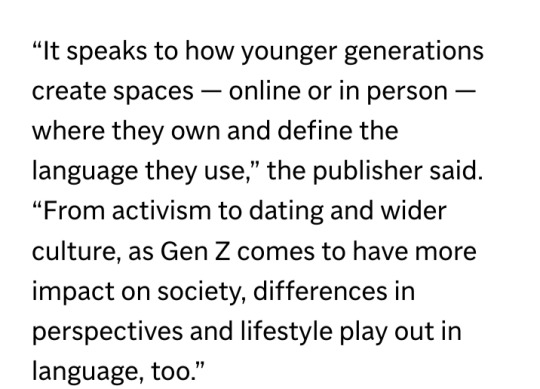
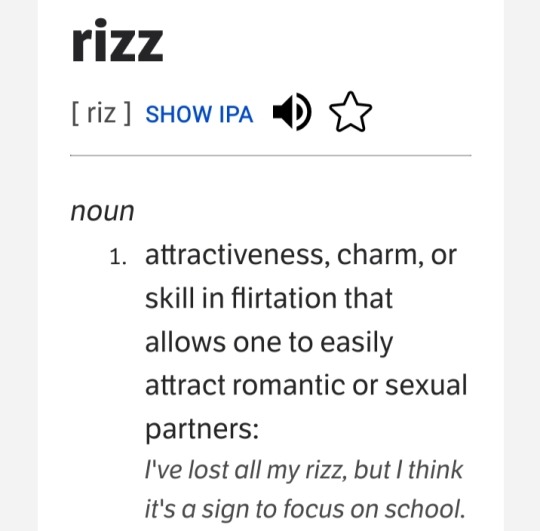
#Rizz#Oxford Dictionary#Oxford University Press#Word of the Year#Gen Z#Generation Z#words#lexicographers#Oxford English Dictionary
5 notes
·
View notes
Text
The Philosophy of Mind by Jonathan Glover (Editor) - A Review
My Rating: 3/5Genre: Philosophy/PsychologyPages: 162 (Paperback)Publisher: Oxford University PressDate of Publication: 13 January 1977
Series: Oxford Readings in Philosophy
Review
Reviewing this one in a manner different from my other reviews because1) This is a scholarly book that I had no business reading and now I am going to review it.2) I checked out two books from the Sahitya Akademi…

View On WordPress
#book review#Compilation#Editor#Jonathan Glover#Non Fiction#Oxford Readings in Philosophy#Oxford University Press#Paperback#Philosophy#Psychology#Sahitya Akademi Library#Shaina Reviews#Shaina&039;s Musings#The Philosophy of Mind
2 notes
·
View notes
Link
The Oxford University Press has planned to publish in 2025 a dictionary that will reflect the history, significance and meaning of African-American language.
The Oxford Dictionary of African American English, a new glossary of language that will contain popular phrases used by historical Black figures and modern-day Black Americans.
#african american#african american dictionary#henry louis gates jr.#oxford university press#oxford dictionary of african american english#african american english#language
15 notes
·
View notes
Photo
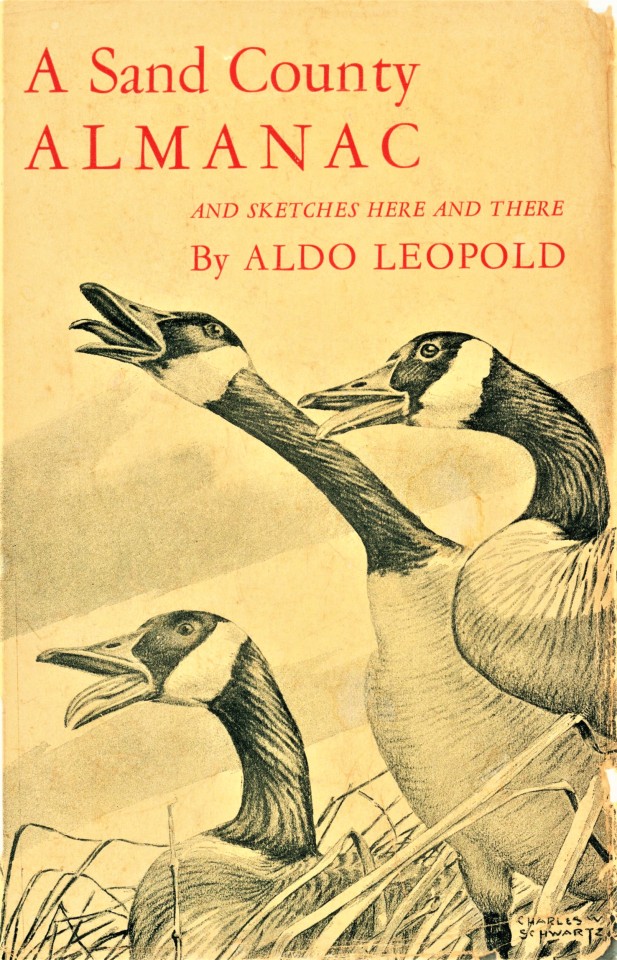
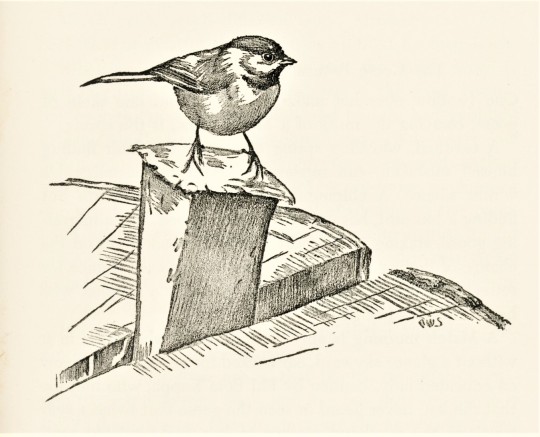





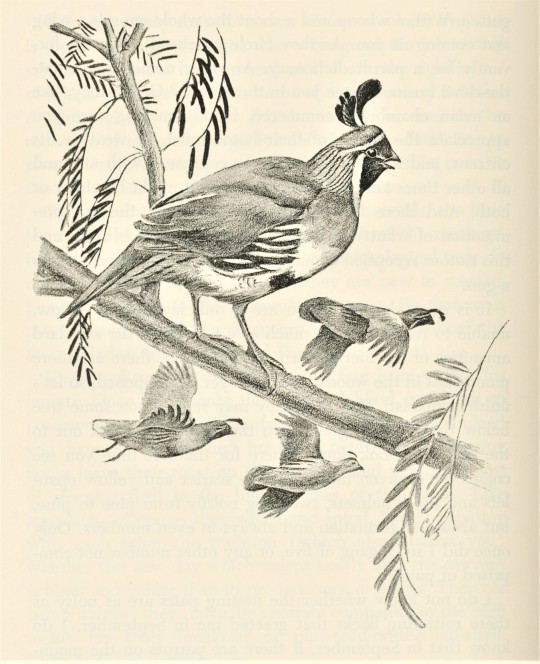
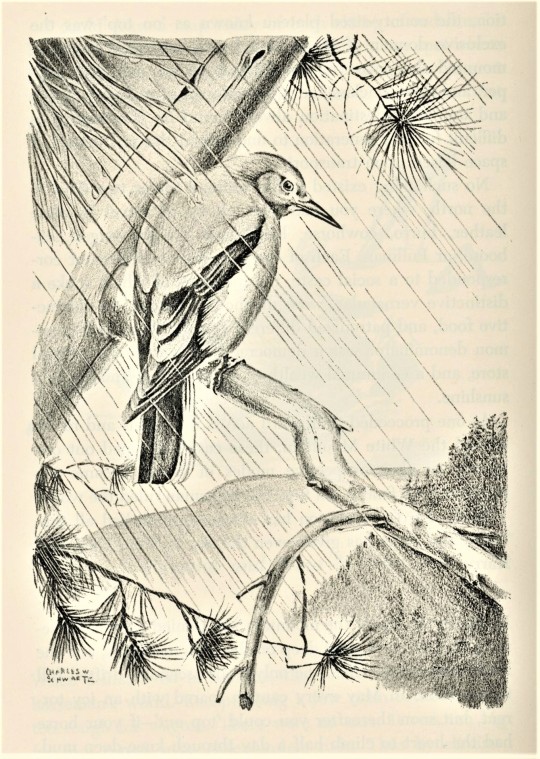
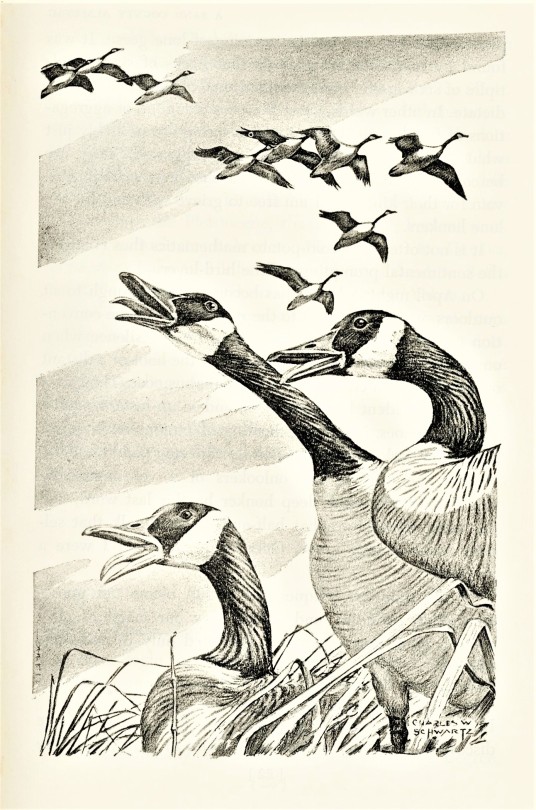
A Sand County Feathursday
One of the most noteworthy books to come out of Wisconsin is A Sand County Almanac by the equally noteworthy Wisconsin naturalist and conservationist Aldo Leopold (1887-1948). Considered a landmark in the American conservation movement, A Sand County Almanac is a collection of essays mainly concerning the land around Leopold’s home in Sauk County, Wisconsin, that advocates the author’s idea of a "land ethic," or a responsible relationship between people and the land they inhabit.
Our copy is a first edition published in New York by Oxford University Press in 1949 with illustrations by the American wildlife artist and fellow conservationist Charles W. Schwartz (1914-1991). The book was published a year after Leopold’s death so he never got to witness its significant impact on the conservation and environmentalist movements.
Schwartz made a special emphasis on depicting the avian inhabitants of Sauk County, and we show a few of those images here that include Canada Geese (Branta canadensis), Black-capped Chickadees (Poecile atricapillus), American Woodcocks (Scolopax minor), and a Mallard (Anas platyrhynchos). A couple of other species shown here are from Leopold’s visits to Mexico and the American southwest, Gambel's Quail (Callipepla gambelii) and Clark’s Nutcracker (Nucifraga columbiana).
The image of the chickadee being annoyed by its newly banded leg has a particularly charming description:
65290 was one of 7 chickadees constituting the ‘class of 1937.’ When he first entered our trap, he showed no visible evidence of genius. Like his classmates, his valor for suet was greater than his discretion. Like his classmates, he bit my finger while being taken out of the trap. When banded and released he fluttered up to a limb, pecked his new aluminum anklet in mild annoyance, and hurried away to catch up with the gang. It is doubtful whether he drew any philosophical deductions from his experience, . . . for he was caught again three times that same winter. . . . By the fifth winter 65290 was the sole survivor of his generation. Signs of genius were still lacking, but of his extraordinary capacity for living, there was now historical proof.
Our copy of A Sand County Almanac is from the collection of another heralded Milwaukee-area environmentalist and activist, Lorrie Otto.
View more Feathursday posts.
#Feathursday#Aldo Leopold#Charles W. Schwartz#A Sand County Almanac#Oxford University Press#Canada Goose#Black-capped Chickadee#American Woodcock#Mallard#Gambel's Quail#Clark's Nutcracker#Lorrie Otto#wildlife art#bird art#birds#birbs!
339 notes
·
View notes
Text

Audre Lorde, Commencement Address: Oberlin College, May 29, 1989, in I Am Your Sister. Collected and Unpublished Writings of Audre Lorde, Edited by Rudolph P. Byrd, Johnnetta Betsch Cole, and Beverly Guy-Sheftall, Oxford University Press, Oxford and New York, NY, 2009, pp. 213-218 (text here) [Solidarity with Palestine – A Radical Black Feminist Mandate: A Reading List, Black Women Radicals]

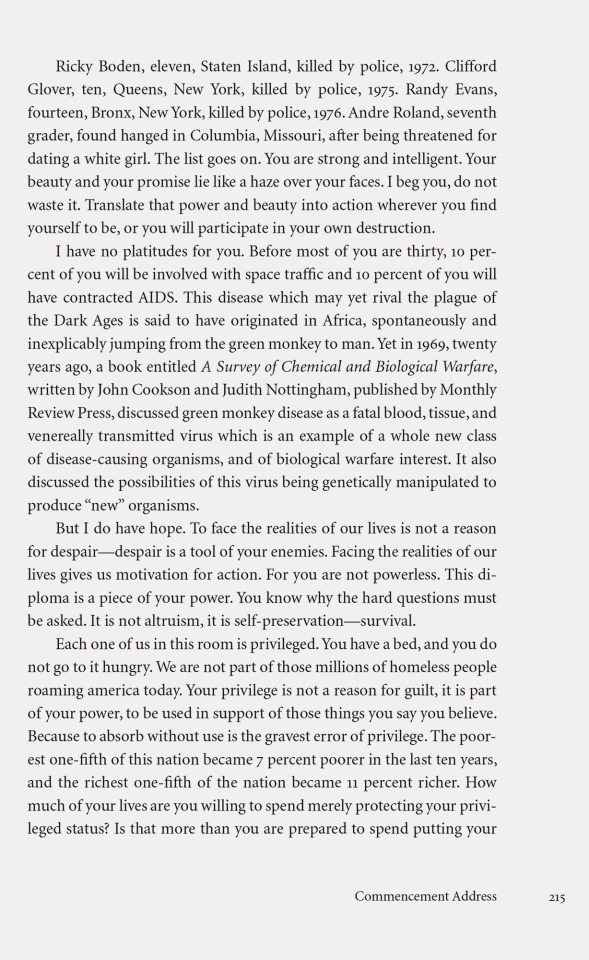
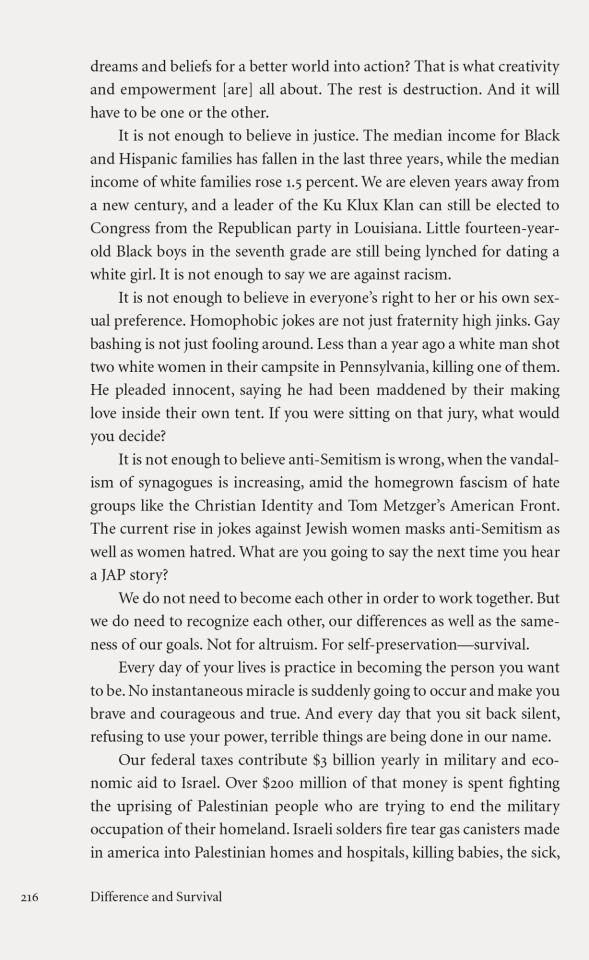

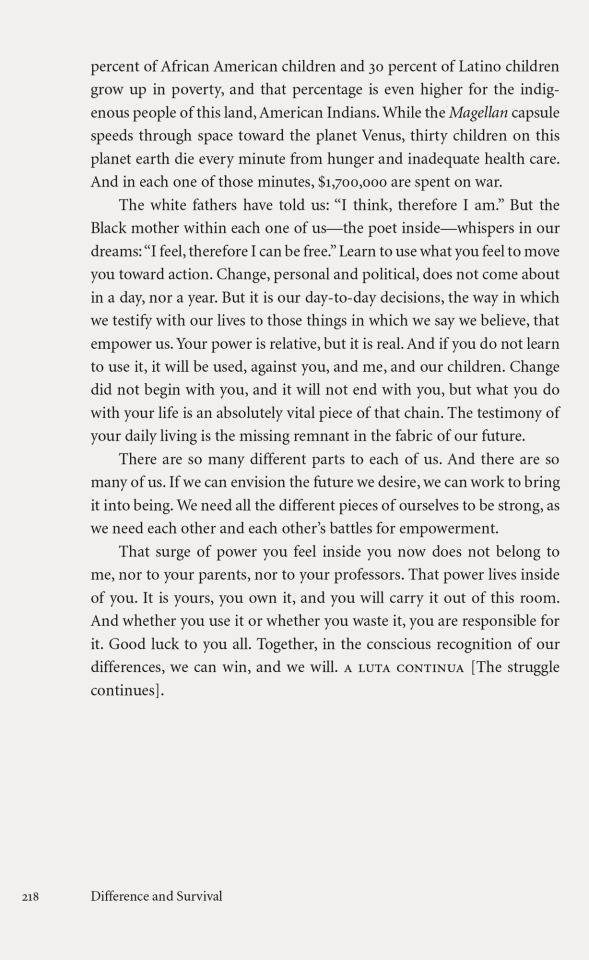
#graphic design#poetry#education#speech#book#audre lorde#rudolph p. byrd#johnnetta betsch cole#beverly guy sheftall#oxford university press#1980s#2000s
6 notes
·
View notes
Photo

owl forme 3
a form i find pleasing that summons to my mind the contour of an owl i have come to call owl forme. the image shown is an example composed of binders’ dies, tooled into the cover of a scarce reprint of Cobbett’s Grammar—gold on front, blind on back. the book was seen through oxford university press under the direction of horace hart [Cobbett’s English Grammar, with introduction by h.l stephen, henry frowde, london, 1906 (oxford appears on the case spine, while title-page imprint shows henry frowde); reprint of the 1833 edition published by the author, william cobbett].
two typographical compositions: ‹owl forme›, handset letterpress; & ‹owl forme 2›, a digital exemplar.
9 notes
·
View notes
Text



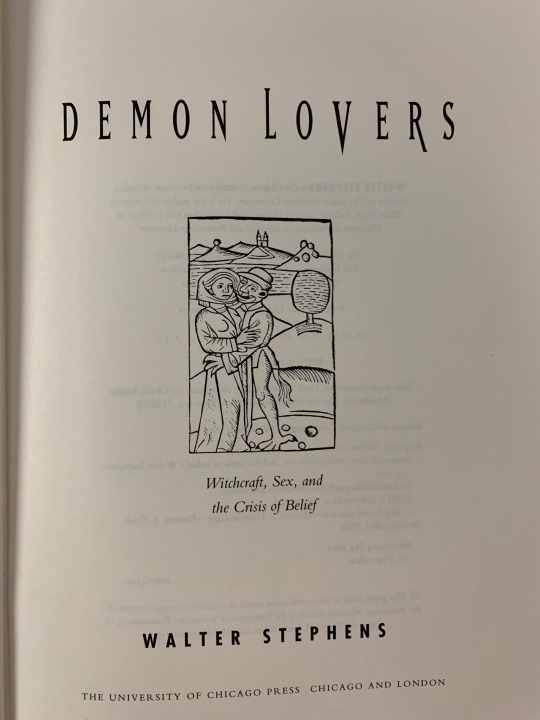

#witchcraft in early modern europe#scholarly tomes#believe it#university of chicago press#demon lovers#walter stephens#oxford university press#thinking with demons#stuart clark#witchcraft#demon lover#witch trials#malleus maleficarum#the devil#demon#demons#bibliography#unread#reading list#research#european history#history#history of witchcraft
11 notes
·
View notes